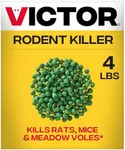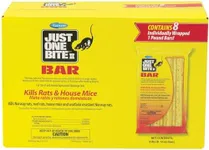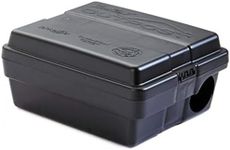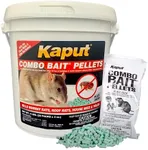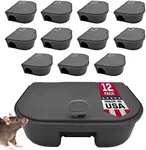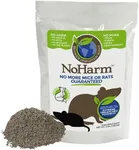Buying Guide for the Best Outdoor Rat Poisons
Choosing the right outdoor rat poison is crucial for effectively managing a rodent problem while ensuring safety for other animals and the environment. When selecting a rat poison, it's important to consider several key specifications that will help you make an informed decision. Understanding these specifications will guide you to the best product for your specific needs and circumstances.Active IngredientThe active ingredient in a rat poison is the chemical that kills the rats. This is important because different active ingredients work in different ways and have varying levels of effectiveness and safety. Common active ingredients include bromadiolone, brodifacoum, and diphacinone. Bromadiolone and brodifacoum are anticoagulants that cause internal bleeding, while diphacinone is a slower-acting anticoagulant. If you need quick results, a fast-acting poison might be best, but if you are concerned about secondary poisoning of pets or wildlife, a slower-acting or less toxic option might be preferable.
FormulationRat poisons come in various formulations such as pellets, blocks, and bait stations. This is important because the formulation affects how the poison is used and its effectiveness in different environments. Pellets are easy to scatter in hard-to-reach places, blocks are weather-resistant and can be secured to prevent them from being carried away, and bait stations are enclosed units that protect the poison from the elements and non-target animals. Choose a formulation based on where you will be placing the poison and the level of control you need over its distribution.
Toxicity LevelThe toxicity level indicates how potent the poison is and how much is needed to kill a rat. This is important for ensuring that the poison is effective while minimizing risks to other animals and humans. High-toxicity poisons require less bait to be effective, which can be useful for severe infestations, but they also pose a higher risk of accidental poisoning. Lower-toxicity options are safer but may require more bait and time to achieve results. Consider the severity of your rat problem and the presence of pets or children when choosing the toxicity level.
Weather ResistanceWeather resistance refers to the poison's ability to withstand outdoor conditions such as rain and humidity. This is important because outdoor poisons need to remain effective despite exposure to the elements. Some poisons are formulated to be weather-resistant, ensuring they remain potent even after getting wet. If you live in an area with frequent rain or high humidity, look for a weather-resistant product to ensure the poison remains effective.
Safety FeaturesSafety features include measures that prevent accidental ingestion by non-target animals and humans. This is important for protecting pets, wildlife, and children from accidental poisoning. Some products come with tamper-resistant bait stations or bittering agents that make the poison unpalatable to non-target species. If you have pets or children, prioritize products with these safety features to reduce the risk of accidental poisoning.
Environmental ImpactThe environmental impact of a rat poison refers to its potential to harm non-target species and the ecosystem. This is important for ensuring that your rodent control efforts do not inadvertently harm other wildlife or contaminate the environment. Some poisons are designed to break down quickly and reduce the risk of secondary poisoning, while others may persist in the environment. If you are concerned about the broader ecological impact, look for products that are marketed as environmentally friendly or have a lower risk of secondary poisoning.

